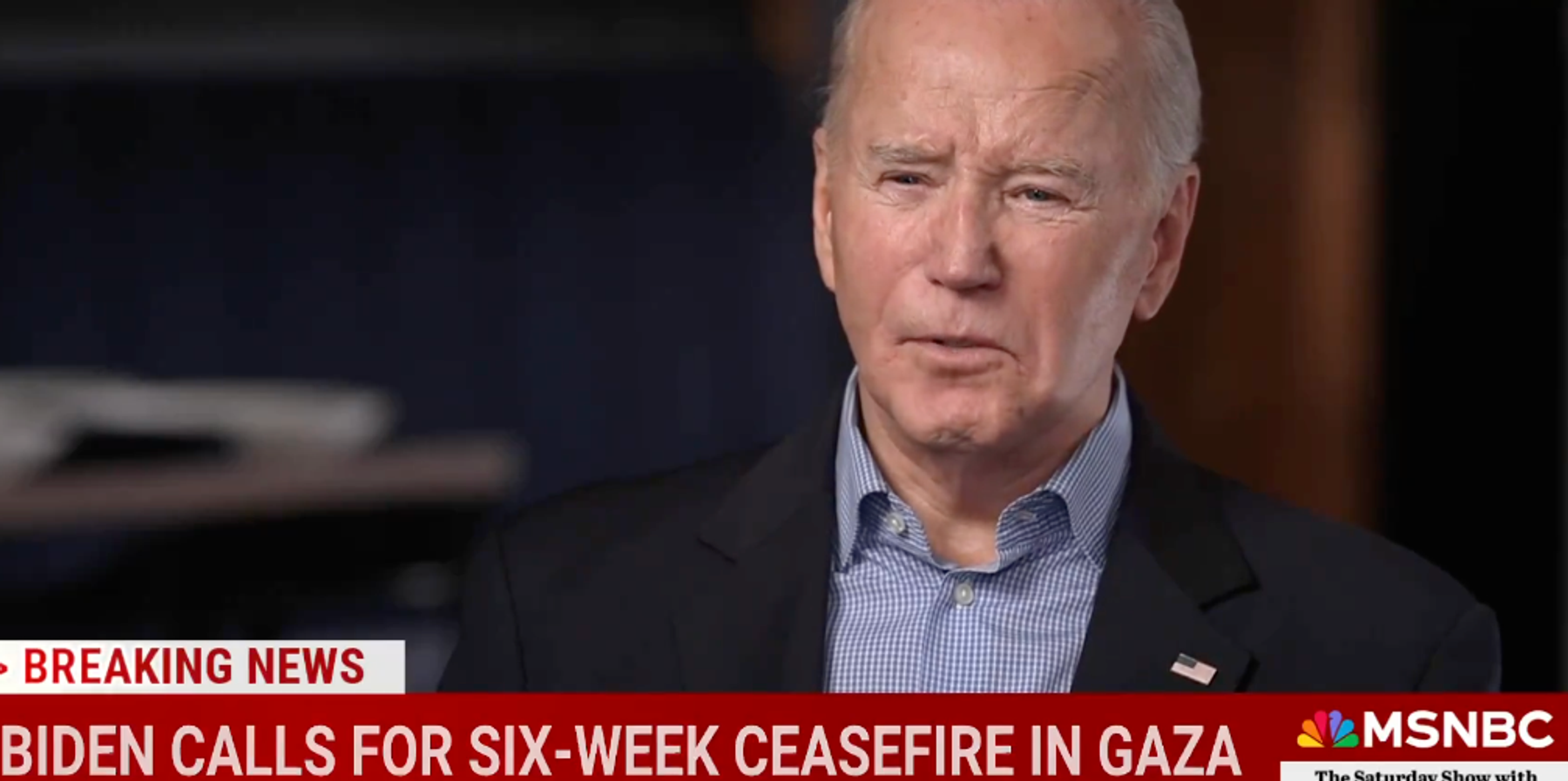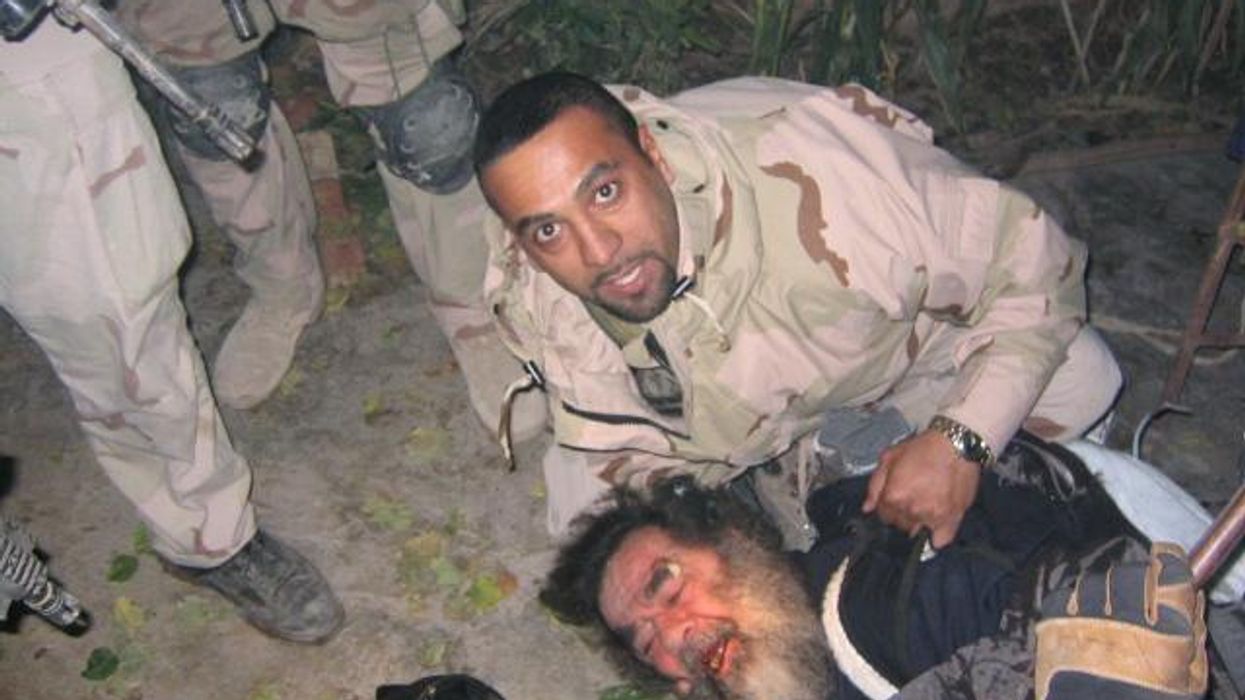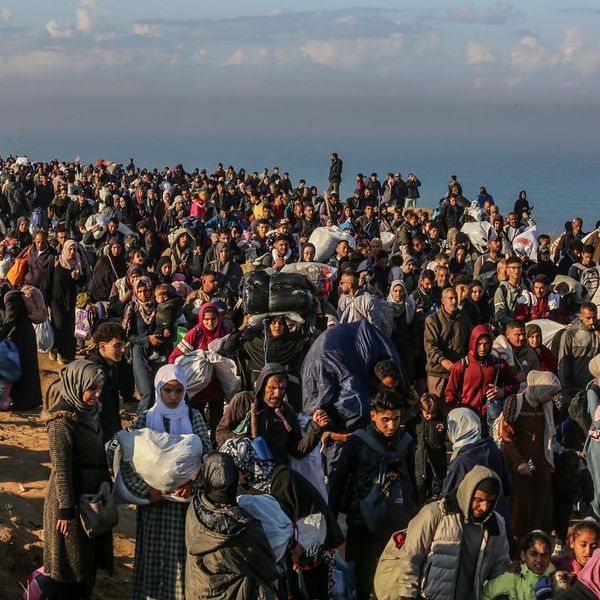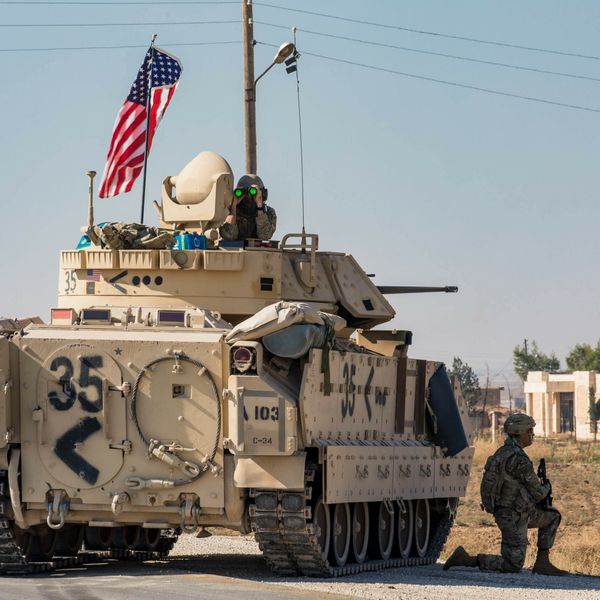In a Sunday interview on MSNBC, President Biden warned the Israeli government that an assault on Rafah would cross a red line, but then immediately undermined that message with contradictory statements.
The president stressed that the “defense of Israel is still crucial, so there’s no red lines [where] I’m going to cut off all weapons” and he said, “I’m never going to leave Israel.” Biden did not spell out what consequences, if any, the Israeli government would face if it crossed the red line and actually launched an assault on Rafah, and the president sapped his warning of any force it might have had by adding so many qualifications of what he would not do.
The president’s interview remarks reflect the failure of administration policy in which the U.S. uses strong rhetoric to signal its displeasure without making the necessary policy changes to give their warnings teeth. Having failed to take serious measures to challenge or rein in the Israeli military campaign for five months, Biden is in a weak position of his own making. It will be difficult for him to issue demands and warnings that the Israeli government takes seriously because the Israelis have ignored so many warnings before now without paying any penalty.
Biden did say that “they cannot have 30,000 more Palestinian dead,” but the president wouldn’t say what he would do if the assault went ahead and the civilian death toll keeps shooting up. He gave Netanyahu’s government no reason to fear that an assault on Rafah would damage the relationship with Washington or affect U.S. support for the war in any way.
That makes Biden’s warning look like a bad bluff that Netanyahu is only too willing to call. In fact, the prime minister is already calling the president’s bluff by saying that the invasion of Rafah is going forward.
The president’s interview comments were consistent with last week’s State of the Union address in which he made several declarations about what Israel “must” do without connecting them to any specific measures he would take if Netanyahu ignored him. The announcement on Thursday that the U.S. would be setting up a temporary pier off the coast of Gaza to bring in more aid was a tacit admission that Biden’s “bear hug” approach to Israel had utterly failed to buy the U.S. influence with Netanyahu.
If Biden’s approach were working, he would not have to resort to absurd and impractical workarounds like the pier and the ill-advised airdrops to avoid confronting Israeli’s blocking of aid. When Netanyahu sees the administration tying itself in knots to avoid clashing with him, that is much more likely to encourage the prime minister to press his luck and see how much he can get away with.
The U.S. has a serious problem when it comes to restraining its clients because American leaders fear alienating these states and possibly “losing” them to other patrons. The Biden administration is hardly alone in this bad practice, but it is demonstrating how dangerous it can be for the U.S. to enable its clients in their most destructive behavior and then to refuse to impose any costs on them when they go too far.
American politicians and policymakers convince themselves that the U.S. needs these clients so much that they surrender all the leverage that Washington has up front and instead obsess over how to “reassure” them that the U.S. will always support them. The president says that he will never “leave” Israel, but that has to be a viable option in any relationship with a client state.
The administration needs to bring its policy in line with its rhetoric, and it needs to do it at once. If an assault on Rafah is truly unacceptable to the president, it isn’t enough to say that this is a red line for the U.S. The administration needs to show that this isn’t an empty threat by spelling out to the Israeli government the specific benefits they stand to lose if they proceed. That should include, but not be limited to, no longer receiving U.S. protection at the Security Council and an indefinite suspension of all military aid.
To prove that they are serious, the administration will need to start following our own laws regarding weapons supplies to governments that are committing grave human rights abuses and violations of international law. As long as the “flood” of weapons to Israel continues, nothing that the president and other U.S. officials say about Israel’s conduct of the war means anything.
Netanyahu will not be easily dissuaded from ordering an assault on Rafah. Last week, he said, “Whoever tells us not to act in Rafah is telling us to lose the war and that will not happen.” That makes it essential that the U.S. apply intense pressure now while there is still time to prevent an even greater catastrophe. An assault on Rafah would drive the starving people of Gaza into a major famine. There are already severe famine-like conditions throughout the territory because of Israel’s deliberate use of starvation as a weapon.
An assault on Rafah would also likely have destabilizing effects elsewhere in the region. The low-level war between Israel and Hezbollah is already threatening to explode into a major conflict, and a Rafah offensive could be the spark that ignites a larger conflagration. There are reports that Iran has given the green light to Hezbollah to escalate in response to such an offensive. The Israeli government has been hinting at its own plans for escalation for months. If there is escalation in the north, it will be a disaster for both Israel and Lebanon.
The Biden administration has done a great deal to stoke the war in Gaza and it shares responsibility for the current disaster, but there is still an opportunity to slam on the brakes and prevent even greater loss of life.
- Who’s the superpower around here? ›
- Biden's calls for Israel to mind the laws appear feeble, and ignored ›
- Mission creep: Will pier become a beachhead for US in Gaza? | Responsible Statecraft ›
- Biden OKs more arms to Israel, crushing hope of Gaza shift | Responsible Statecraft ›
- Israeli bombs drop on Rafah as Gazans flee their homes | Responsible Statecraft ›
- Biden’s mixed messages to Israel are coming home to roost | Responsible Statecraft ›
















